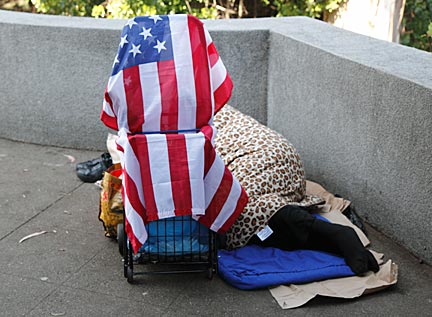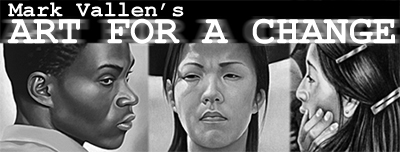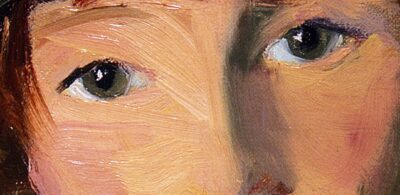Coit Tower Crisis

I visited San Francisco, California in late 2011, for the most part to photograph the impressive murals in the Bay Area that were painted in the 1930s and 1940s. A few of the murals are still well known, especially to those living in San Francisco, but by and large the great majority of these public works have long been forgotten – even by arts professionals. Furthermore, nearly all of the artists that painted the murals have largely fallen into obscurity, and very few people today can recall their names.
In months to come I will publish on this web log my photographs of a number of the murals, along with biographical information on those artists responsible for their creation. I have long been perplexed by the small number of high-quality, close-up photos of the murals to be found online, something I hope to correct to some small degree with this series of posts. More importantly, my upcoming illustrated essays will offer insights into how the murals were actually produced, providing a unique artist’s viewpoint of the historic paintings.

Constructed in 1933, Coit Tower is unquestionably the most well known locale for some of the best 1930s era murals; currently around 200,000 people, mainly tourists, visit the historic landmark each year. In all likelihood the majority of tourists visit because the tower affords the most remarkable view of San Francisco and the entire Bay Area. On any given day one can see hundreds of vacationers disembarking from sightseeing buses to view the famous building that sits atop Telegraph Hill. But all is not well for one of the city’s best known tourist attractions.
Since their creation in 1934, the Coit Tower murals have undergone several restorations. Photos from 1960 show the murals so disfigured by graffiti that the city sealed the paintings off from public view in order to conduct an extensive restoration that lasted from 1987 to 1990. Today the murals are again in poor shape, mostly from water and salt damage due to San Francisco’s well-known fog. During my visit to the tower I was shocked at the level of disrepair; chips and scratches have certainly taken their toll, and water damage is apparent everywhere; the walls and ceiling are peeling, and salt build-up has caused streaks on a number of paintings.

An October 2011 article titled Depression-era Coit Tower murals need touch-up published by the San Francisco Chronicle details some of the problems. A January 2012 PBS NewsHour ran a special segment about the Coit Tower murals that detailed the state of disrepair of the historic wall paintings as well as efforts to preserve the murals.
It was Diego Rivera’s 1930-31 visit to San Francisco that truly began the explosion of mural painting in the Bay Area, which I noted in the first essay of this series, Diego Rivera: The Making of a Fresco. At the time many Bay Area artists were involved in the school of American social realism, and more than a few of them traveled to Mexico in order to encounter first hand the masters of the Mexican Muralist School. Bernard Baruch Zakheim comes to mind; having made the trek to Mexico City to meet and work with Diego Rivera in 1930, Zakheim and fellow artist Ralph Stackpole successfully lobbied the U.S. government for a commission allowing artists to paint murals on interior walls of San Francisco’s newly constructed Coit Tower.
Upcoming posts will include close-up views of the Coit Tower murals by Zakheim and Stackpole, but also extreme close-up shots of mural paintings by John Langley Howard, William Hesthal, Clifford Wight, Maxine Albro, Suzanne Scheuer, George Harris, Frede Vidar, Ray Boynton, Victor Arnautoff, Otis Oldfield, Jose Moya del Pino, Rinaldo Cuneo, and other notable masters of American social realism.
The Teaching American History Project of the Oakland Unified School District (OUSD), a project funded by the U.S. Department of Education in partnership with the University of California, Berkeley, and the Oakland Museum, provides an overview of the Coit Tower Murals titled “A Social Narrative Depicting ‘Aspects of California Life’ in 1934” (click here for the .pdf document). The online teaching guide quotes extensively from this writer regarding some of the finer details and controversies around the Coit Tower mural project. The document also presents some reasonably sized, clear photos of the Coit murals.

When I visited the historic landmark that is Coit Tower, I found a destitute woman sleeping near the building entrance; her worldly possessions were held in a small pushcart adorned by the American flag.
It is no small irony that the depression era realities depicted in the Coit Tower murals are today seen on the streets of the U.S. during the reign of the Obama administration. One difference between the mid-30s and the present is that contemporary artists have yet to challenge the systemic failures that give rise to economic collapse, mass poverty, and war.
POSTS IN THIS CONTINUING SERIES:
Arnautoff & the Chapel at the Presidio
Diego Rivera: The Making of a Fresco
Diego Rivera: Pan American Unity


